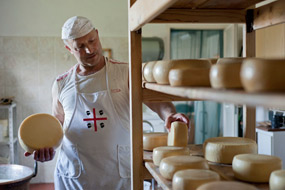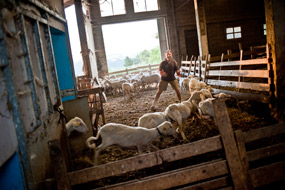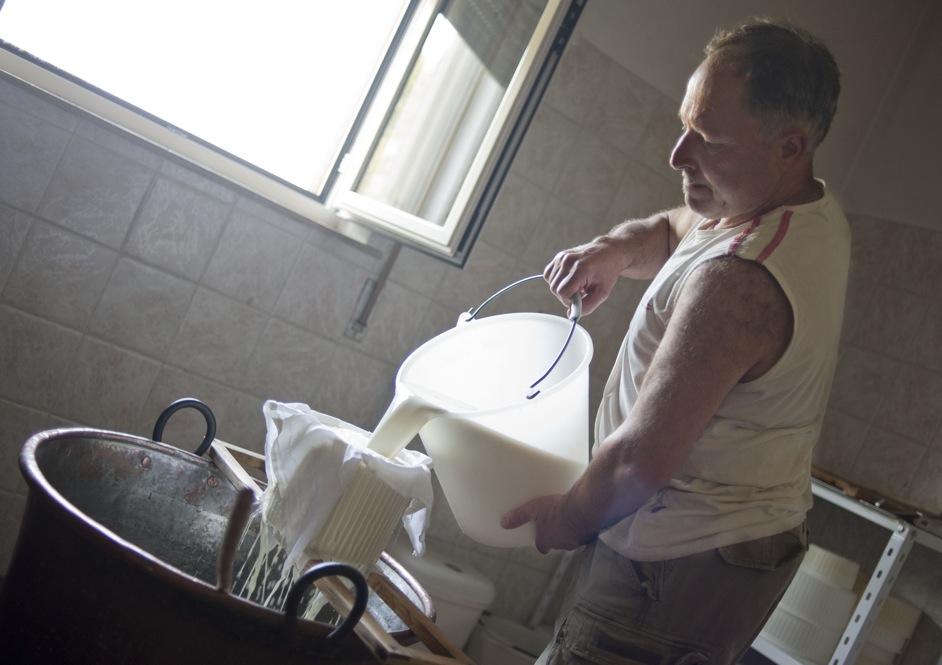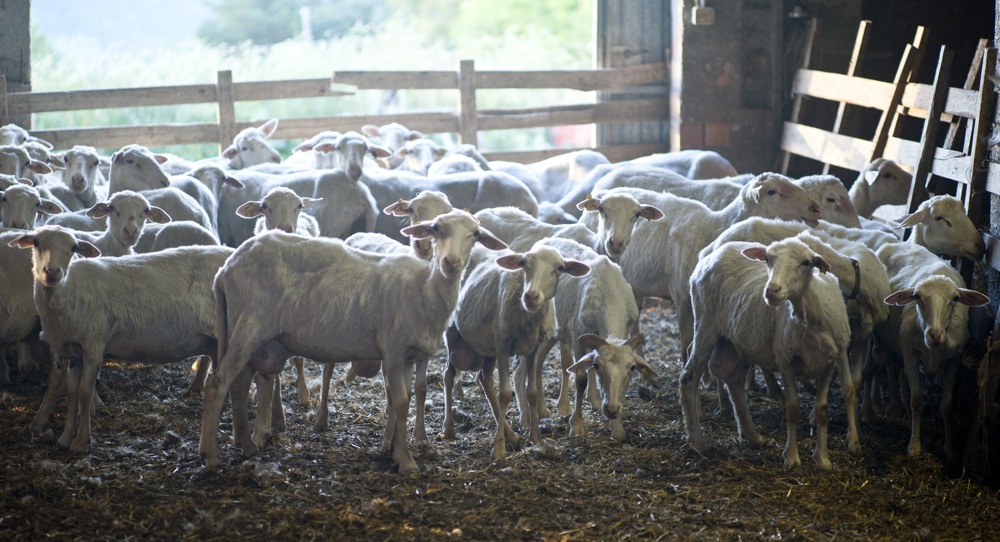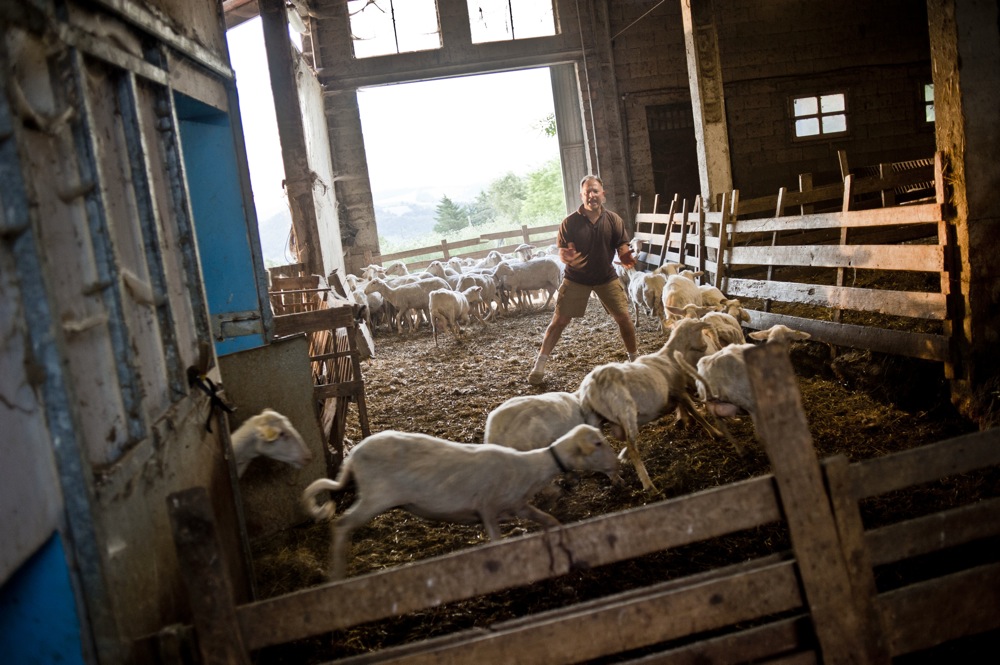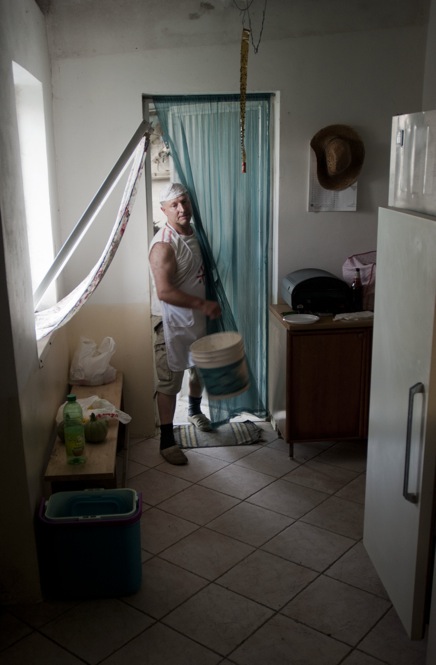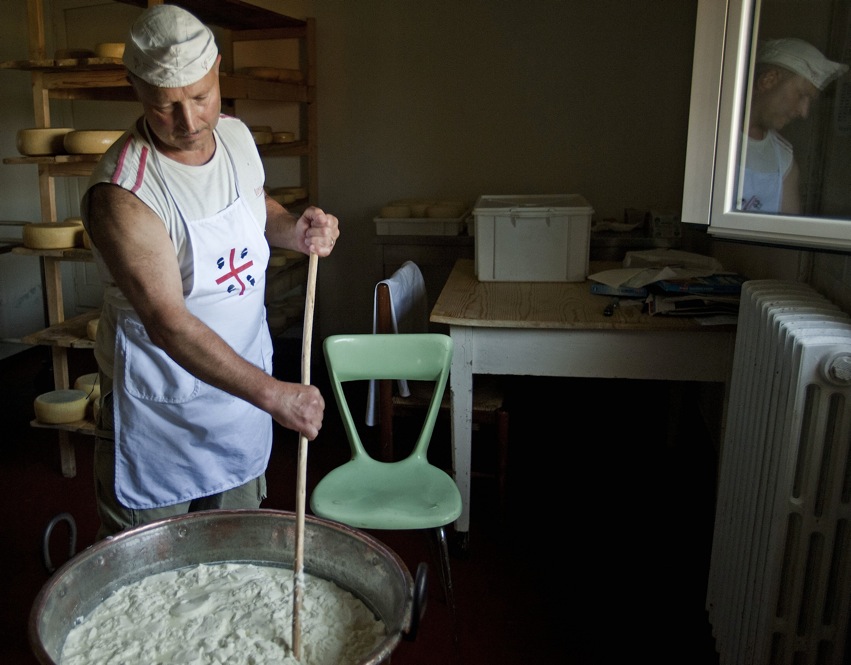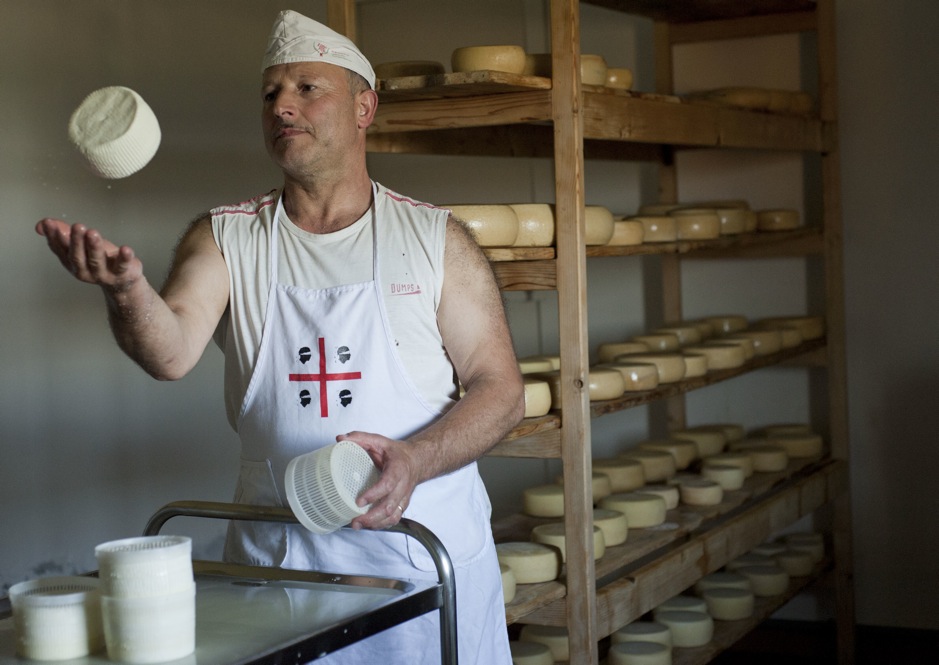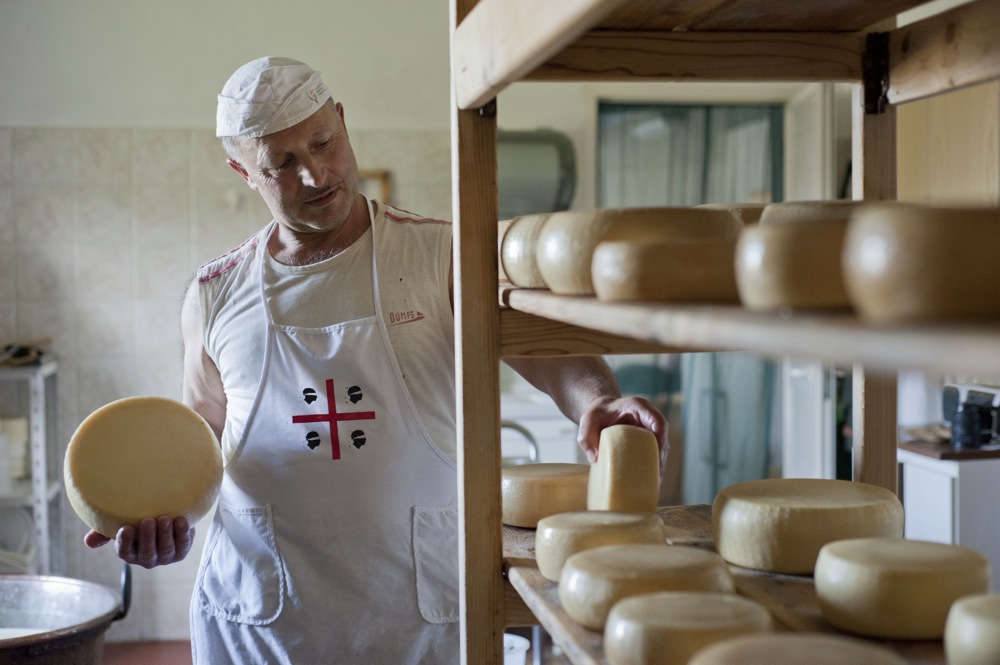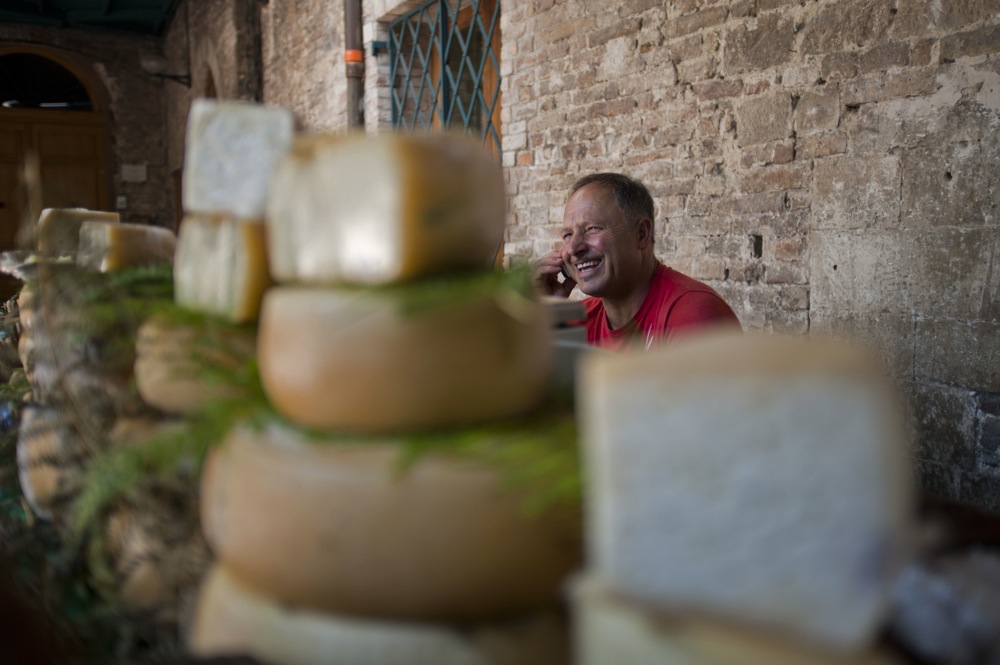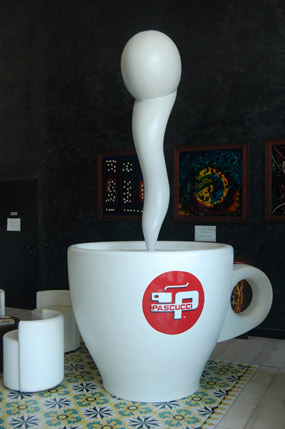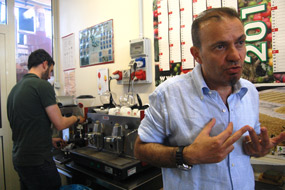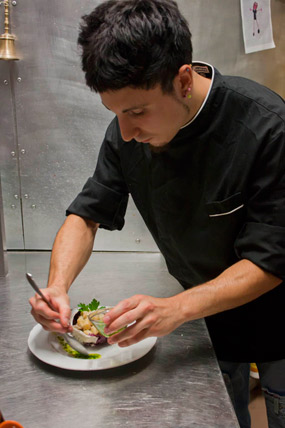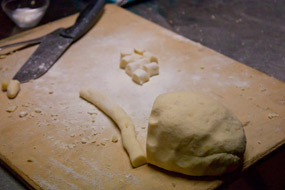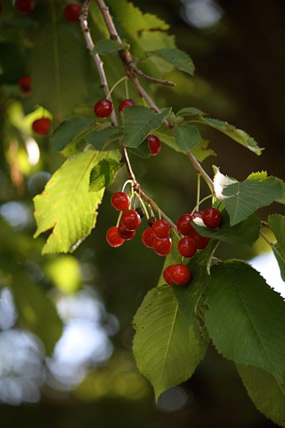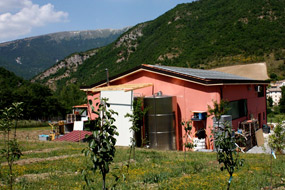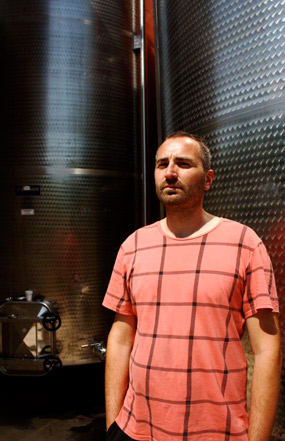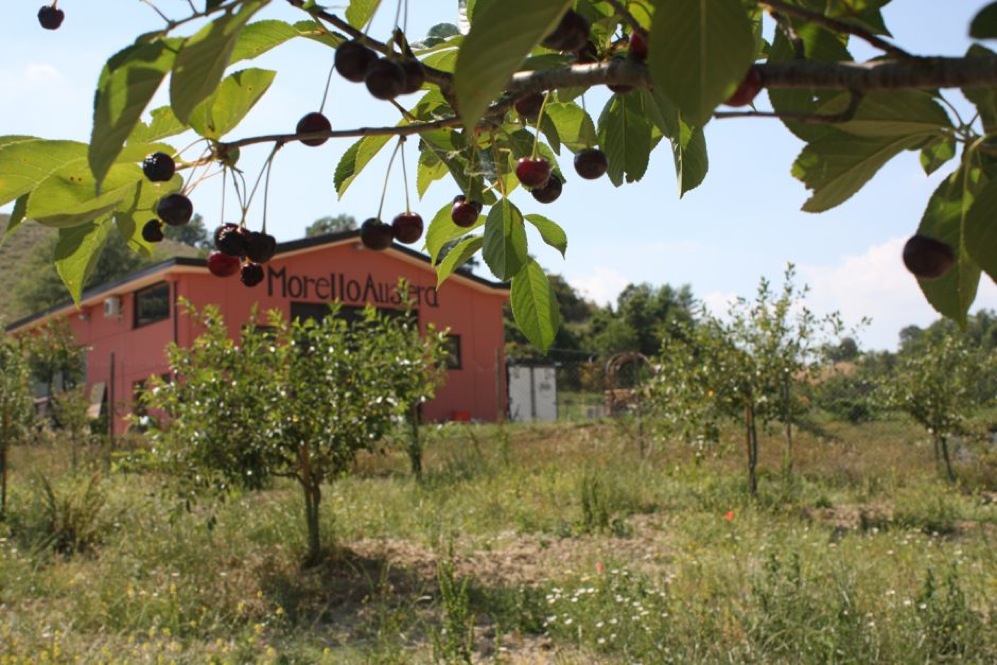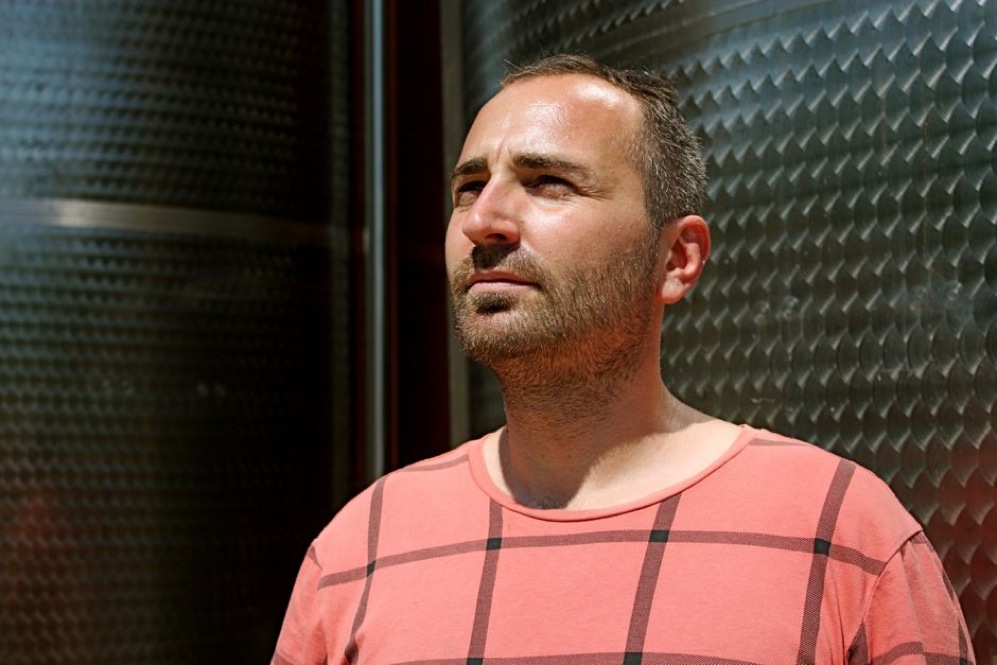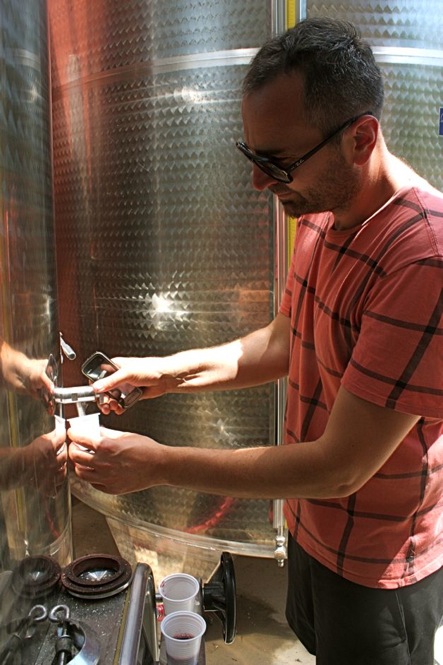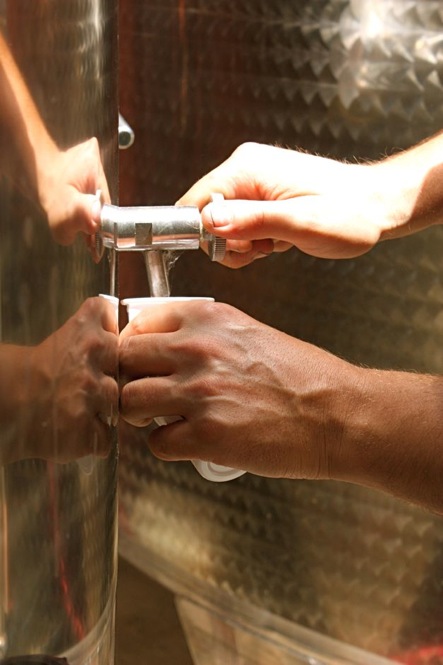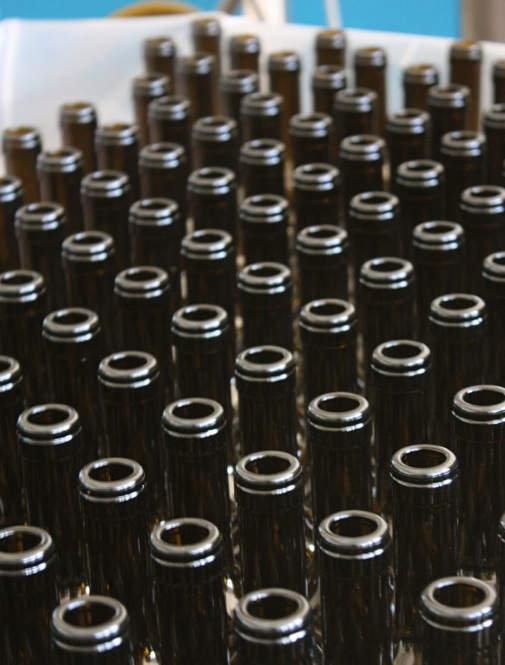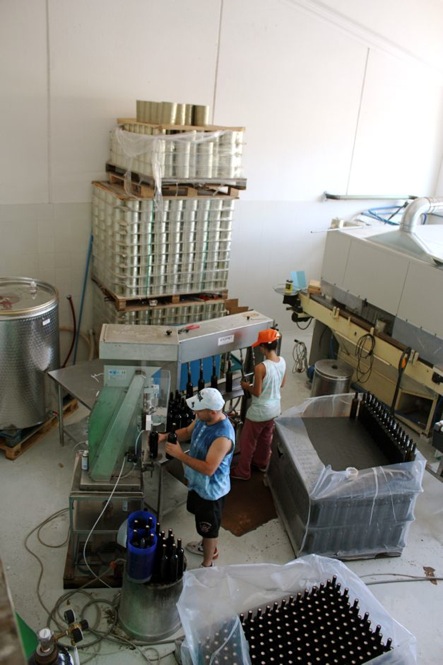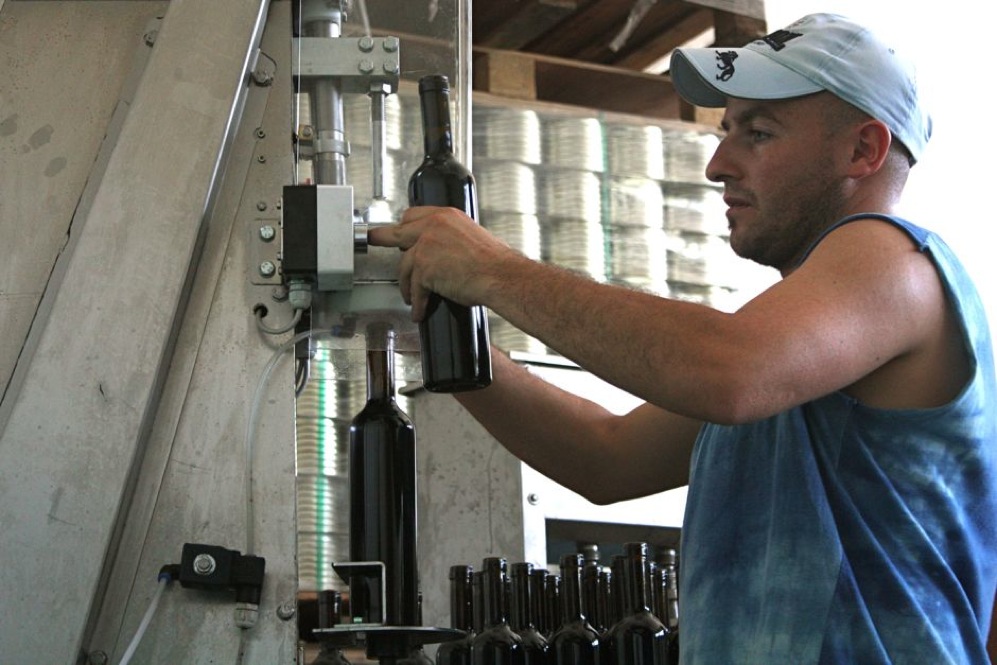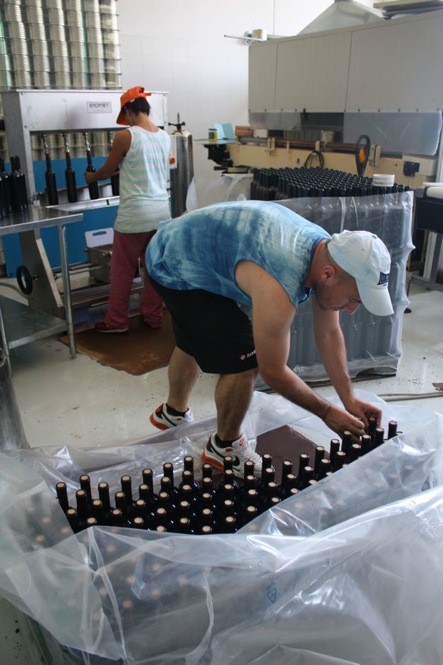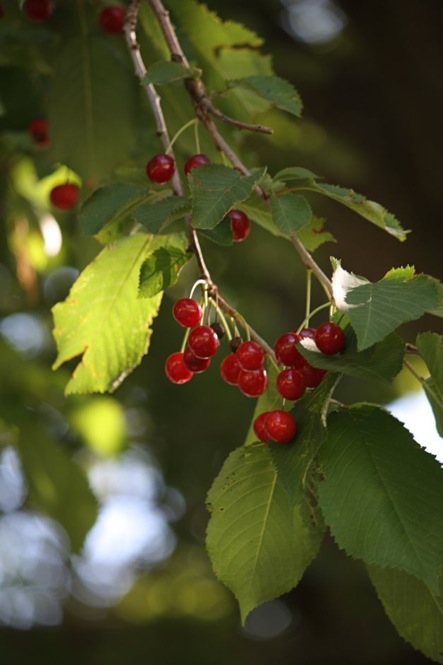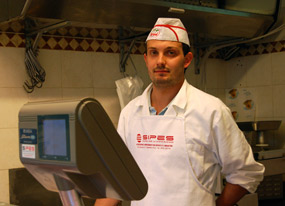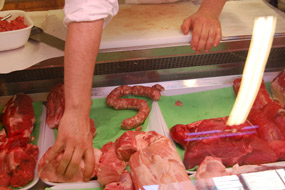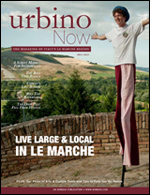A look at a hog’s heaven near the mountain town of Cagli reveals one secret in the magic story of how salumi has become a star of Italy’s culinary culture.
CAGLI, Italy – Atop a flat plain nestled deep in the rolling hills near this old Roman town, pigs are going wild.
It is feeding time. Boars and sows of all colors, shapes and sizes scramble from their wallows, knock into fences and collide into a tangle of loin, belly and butt in the middle of the farm yard.
In the tumultuous center, amidst the babel of sniffing, snorting and squealing, stands pig farmer Sergio Lapico, clutching a handful of grass and herbs to the jostling mass of eager, upturned mouths.
I want them to be happy, because a happy pig is a delicious pig.
Squealing and gesturing madly, he is beseeching the swine in pig-speak: Eat more, grow fat and be happy, my children. And the pigs reply with grunts of delight, perfectly ignorant of the meaning of the theatrics of this strange human figure. But they nod their snouts in agreement all the same.
“I want them to be happy, because a happy pig is a delicious pig,” said Sergio, clad in mud-splattered cover-alls and dusty wellingtons. “This is how good salumi comes about.”
Organically-raised pigs like the ones on Sergio’s farm are perfect for the creation of the salumi, superstars of ham and one of Italy’s distinctive gastronomical inventions.
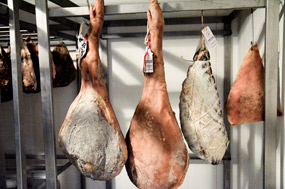 And one of its favorites. Offer an Italian a slice of salumi and see his face light up magically. It is a specialty dish that holds a unique place of affection for many Italians due to early childhood memories of hand-sliced treasures served up at dinner tables.
And one of its favorites. Offer an Italian a slice of salumi and see his face light up magically. It is a specialty dish that holds a unique place of affection for many Italians due to early childhood memories of hand-sliced treasures served up at dinner tables.
Diverse types and splendid names. Prosciutto, mortadella, capocollo, culatello, lardo, and salame. Royalty among pork products, they hang regally behind the glass windows of specialty shops and gourmet delicatessens all over Italy. These cured meats adorn the menus of world-renowned restaurants and are mainstays of the antipasto platter.
Salumi, known to most Americans as salami, encompasses a family of hams, salamis and bolognas from Italy. These preserved meats lend robust flavors to appetizers, soups and pastas. They start with whole cuts of meat from farm-raised hogs that are cured and then aged for months, maybe even years.
Although it lacks the universal appeal of pizza and pasta, Italy’s ubiquitous culinary exports, salumi is an indispensable food in this artisanal food culture. But the world is slowly waking up to what is possibly Italy’s best kept culinary secret. Within the past decade, restaurants like Eataly in New York and Salumi in Seattle have sprouted all over America and are famous for making the tastiest salumi outside of Italy.
But try as they may, nobody makes salumi with as much tradition, craft and flair as the Italians.
For Stefano Galli, owner of Salumi Galli, a renowned salumi making company in Fermingnano, preserving family traditions is much more than just sticking to every detail in the family recipe book. It is also an unstinting devotion to his family’s practices of using only the freshest locally grown meats and to make them using centuries-old artisanal methods of spicing and curing.
For the past 20 years, Galli has been selling his name and his products to a loyal clientele made up of housewives, restaurateurs and local connoisseurs who have developed a penchant for his intricately seasoned meats.
With short cropped hair, delicate features, shy demeanor and a nose as sharp as the knife he uses to slice his hams, Galli looks more like a shrewd scientist than a skilled curer of meats. Indeed, making salami is as much a science as it is an art. There are no magical elves in white aprons scurrying across kitchen floors hacking, slicing and dicing, conjuring up truckloads of sausages a day. Instead, modern equipment like table-top meat grinders turn pounds of cold loin and belly into mashed ribbons and sausage stuffers load the meat into sheaths of natural skin made from pig intestines.
“Seasoning and curing meat is an extremely precise and painstaking process,” said Galli, a tub of minced pork belly at his elbow. “Lean meat, fat and seasoning salt have to be in exact quantities; too much or too little will ruin the flavor.”
“Everything has to be perfecto. Everything”, he said while tying the loose end of a sausage casing, his voice suddenly edged with an impressive gravity. You never doubt a man when he speaks like that. Not when he is a salumi artisan, wholly immersed in his work.
Salumi making methods have changed very little since the time the very first salumi was made, says Galli. The raw meat is first varnished with a curing mixture of salt, sodium nitrate, and live culture. Salt prevents spoilage, sodium nitrate injects flavor and live culture aids fermentation.
Traditional salumi should be made adding as little artificial flavorings as possible. You can easily tell the difference, he says; a deep red hue means plenty of meat with little additives, while a brownish hue contains great amounts of additives.
Galli’s humidity controlled cellar or what he calls his “laboratory”, is where the salumi are stored, cured with suppleness and supercharged flavor, fostering a complexity only long aging can achieve. In ancient days, salumi could only be made in musty cellars and grubby attics during winter. Now, with modern refrigeration techniques, they can be aged in an optimum temperature and humidity for prolonged periods.
“In the past, without refrigeration, it is difficult to make quality meat like the culatello, which has to be aged for at least a year before it can be served,” said the cure-master, pointing to a row of pear-shaped ham braced with twine. “It’s the best salumi there is.”
Culatello, Italy’s rarest ham, is prized for its elegant, silky textures and nuanced flavors. Taste it and the best prosciutto or capocollo seem like mere bacon. Besides this legendary ham, Galli produces other stellar salumi like pancetta, lonzina, prosciutto, salame and guanciale, all made from various parts of the pig.
It is foolish to try to make good salumi from the meat of industrial pigs. The taste will be inferior.
Although the curing and storage of pork is the most crucial stage in the salumi making process, the manner in which the pigs are reared decides the quality of their meat. Along with age-old Italian pastoral traditions, the highest quality, all-natural pork must be used to create the finest salumi.
“It is foolish to try to make good salumi from the meat of industrial pigs. The taste will be inferior,” said Sergio who makes a small amount of salumi such as the prized lardo and prosciutto at his farm, selling both raw and cured meat to nearby specialty shops and restaurants.
Factory-farmed hogs live crammed in drab confinement. They are castrated to reduce aggression and are stuffed with growth promoters and antibiotic-laden feed. So naturally, their meat will not be ideal for making salumi, says the charming 50-year-old bachelor.
Here on his organic farm, there are pigs of wide-ranging varieties: wild hogs, black pigs, large-whites, and cinta-senese. They live in bucolic bliss, pasturing freely on wide open forest spaces and munching on a steady and plentiful diet of grass and herbs. The idyllic lifestyle gives rise to meat which tastes sweeter, and is far more tender than any supermarket cut.
This place may be hog heaven for Sergio’s pigs, but it is a slice of culinary paradise one experiences when sampling salumi made from the meat of these free-range porkers. Cut with his electric meat slicer, these parchment-thin slices of salumi look like petrified petals of a pale summer rose.
Tasting it, one is stunned by its mellow, delicate flavor and obscenely rich and creamy texture. It even tastes better than it looks. They are usually perfect on their own. Sergio likes to serve them with hard crusted bread and a glass of Verdicchio, a local white wine from the Le Marche region that had a freshness which paired perfectly with the saltiness of the cured meat.
Performing the pork-preserving craft is not without its sacrifices. Living a solitary life on a farm reaps loneliness as the only conversations he has here are those with his pigs.
But like the hogs on his farm, Sergio is happy.
“I live for my pigs and for my salumi,” he says. “To make really good salumi, you need real passion and dedication. Nothing less.”
With that, he turned to his pigs and started squealing again.
A collection of reports and articles about the salumi:
http://johnlehndorff.wordpress.com/2010/12/20/2011-food-trends-u-s-vs-italian-salumi-private-brands-rising-lamb-rice-and-peace
Click on Image to Show in Lightbox.
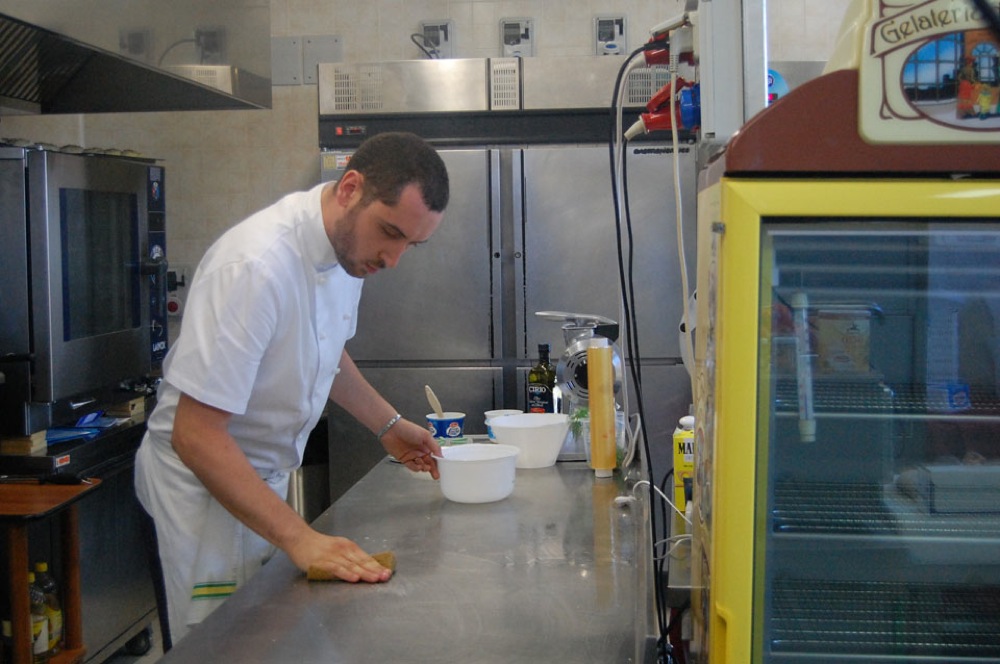 Chef Nicola Costantini cleans his cooking space before beginning to prep his meal. He started to cook his meal early in the morning.
Chef Nicola Costantini cleans his cooking space before beginning to prep his meal. He started to cook his meal early in the morning.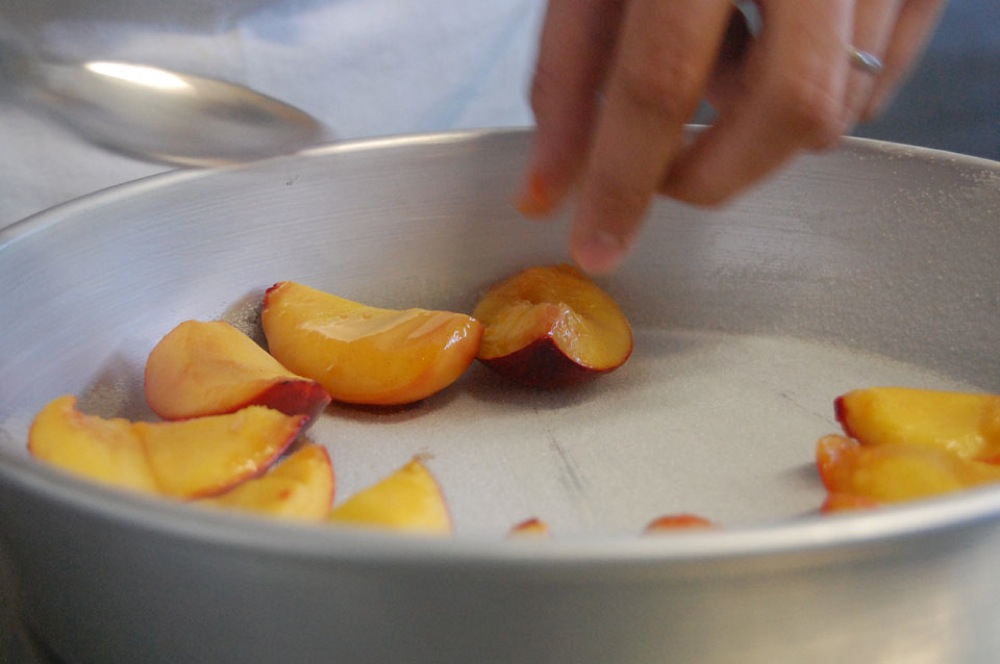 In order to prepare the third course, the dessert course, for his dinner he places cooked peaches into dishes. The peaches were cooked in a pan with a wine sauce.
In order to prepare the third course, the dessert course, for his dinner he places cooked peaches into dishes. The peaches were cooked in a pan with a wine sauce.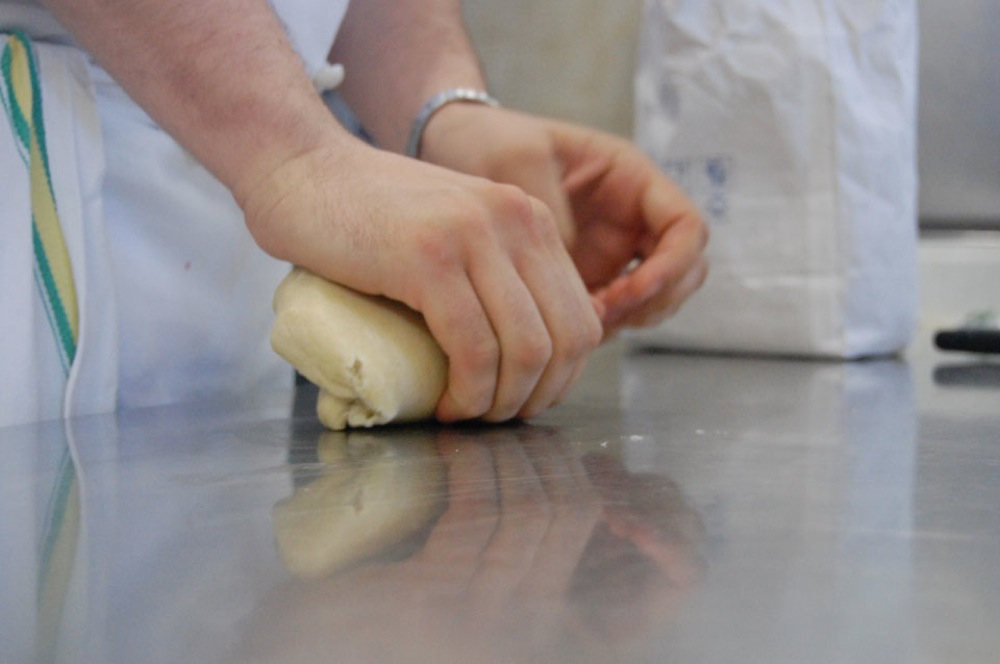 Fresh pastry dough was used to make the crust of his peach tart. He cut it up into sections and rolled it out before placing it on the peaches.
Fresh pastry dough was used to make the crust of his peach tart. He cut it up into sections and rolled it out before placing it on the peaches.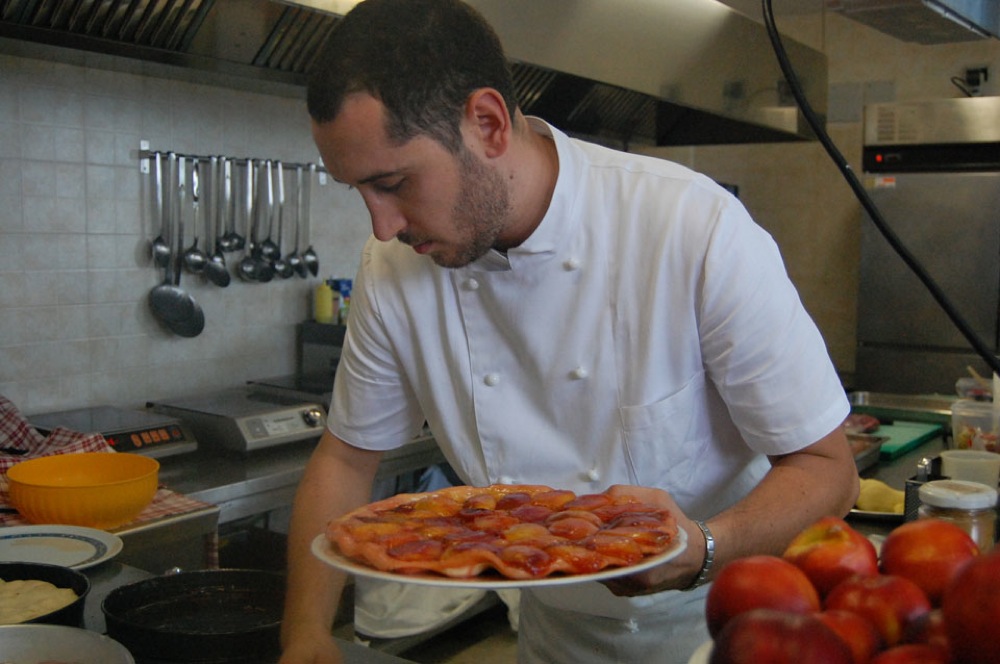 After cooking the dessert, it is removed from the pan and flipped upside down. A swift aroma of freshly cooked peaches filled the room as the plates were uncovered.
After cooking the dessert, it is removed from the pan and flipped upside down. A swift aroma of freshly cooked peaches filled the room as the plates were uncovered.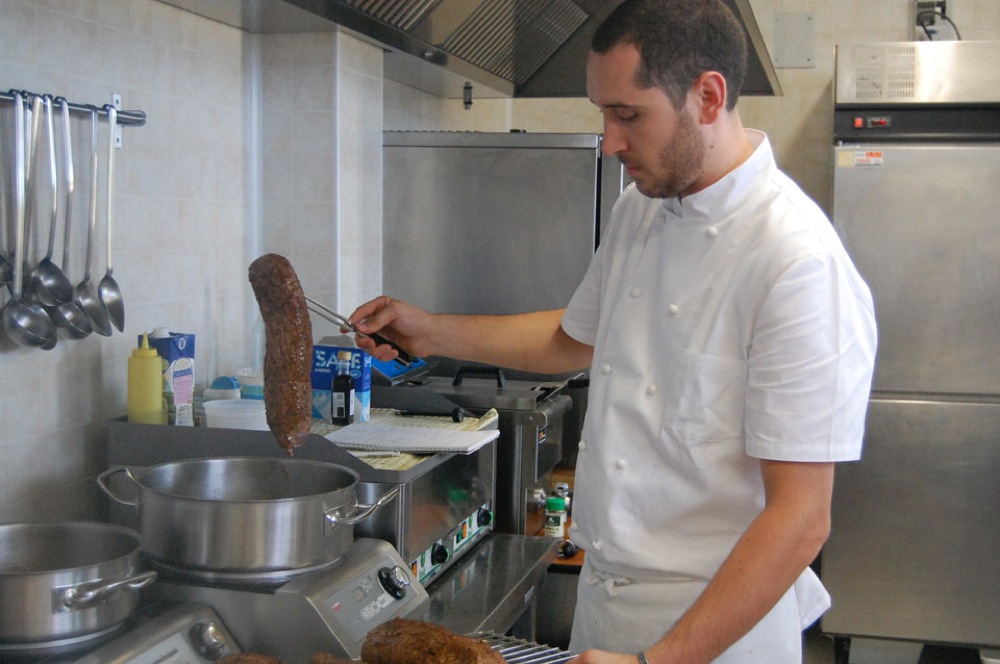 The veal was seared in a pan and then braised in the oven. The pieces of veal were placed on racks before being put into the oven to braise.
The veal was seared in a pan and then braised in the oven. The pieces of veal were placed on racks before being put into the oven to braise.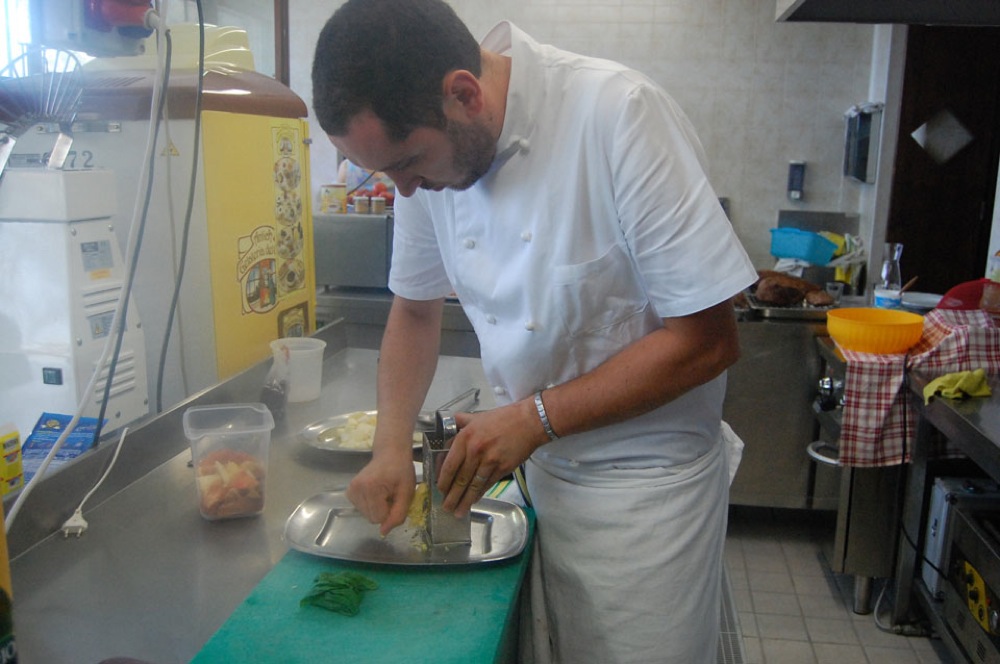 In order to get the most flavor from the ginger root, he grated it, and then later squeezed the juice from it. Ginger was one of the most prominently used spices in the Renaissance era.
In order to get the most flavor from the ginger root, he grated it, and then later squeezed the juice from it. Ginger was one of the most prominently used spices in the Renaissance era.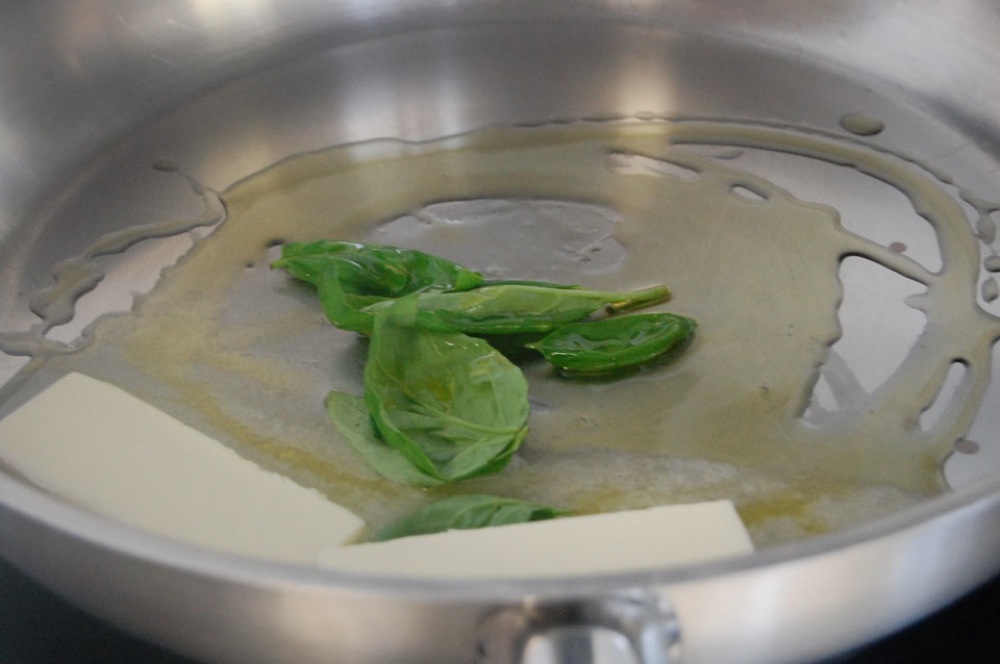 Colors and seasonings are a big thing in the kitchen. Everything was seasoned in a way that complemented the other elements on the dish. This was the same way things were done in the Renaissance.
Colors and seasonings are a big thing in the kitchen. Everything was seasoned in a way that complemented the other elements on the dish. This was the same way things were done in the Renaissance.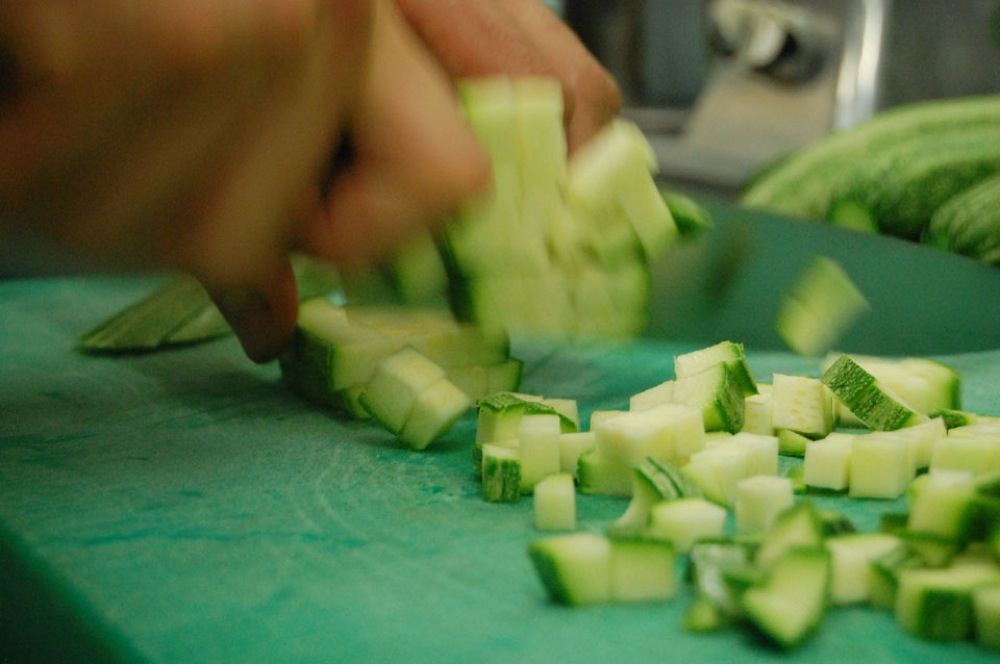 Fresh vegetables and fruits were common in Renaissance cuisine. I Calanchi agriturismo uses fresh vegetables from their garden.
Fresh vegetables and fruits were common in Renaissance cuisine. I Calanchi agriturismo uses fresh vegetables from their garden.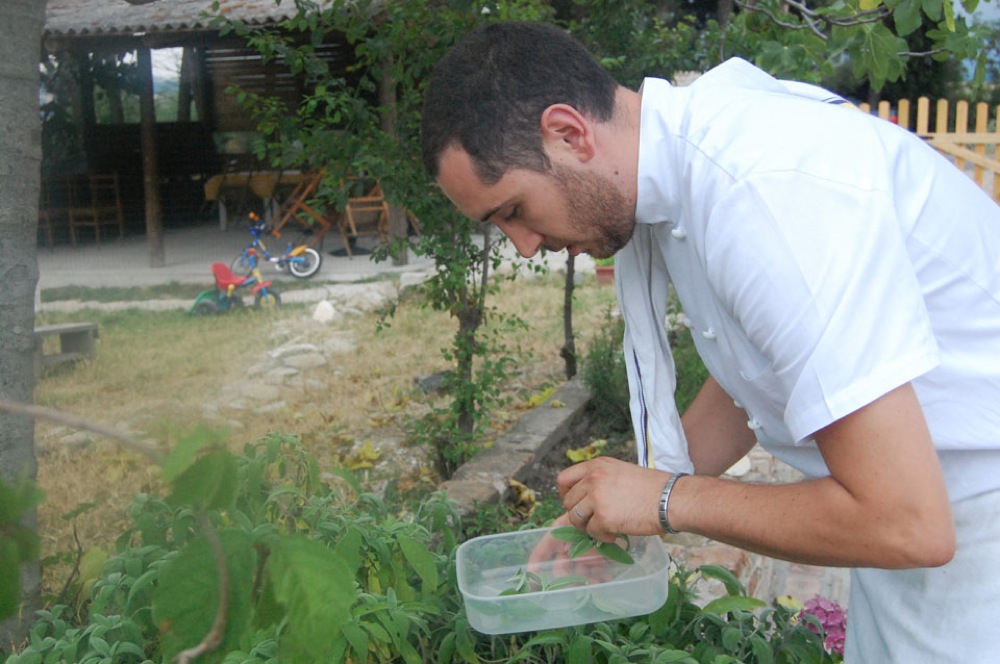 Fresh herbs are some of the best ways to season things. Fresh herbs were common in Renaissance cooking, not always for seasoning, but also as decoration.
Fresh herbs are some of the best ways to season things. Fresh herbs were common in Renaissance cooking, not always for seasoning, but also as decoration. Having the same seasonings and taste as there was during the Renaissance. There was a harmony of spices and fruit flavors.
Having the same seasonings and taste as there was during the Renaissance. There was a harmony of spices and fruit flavors.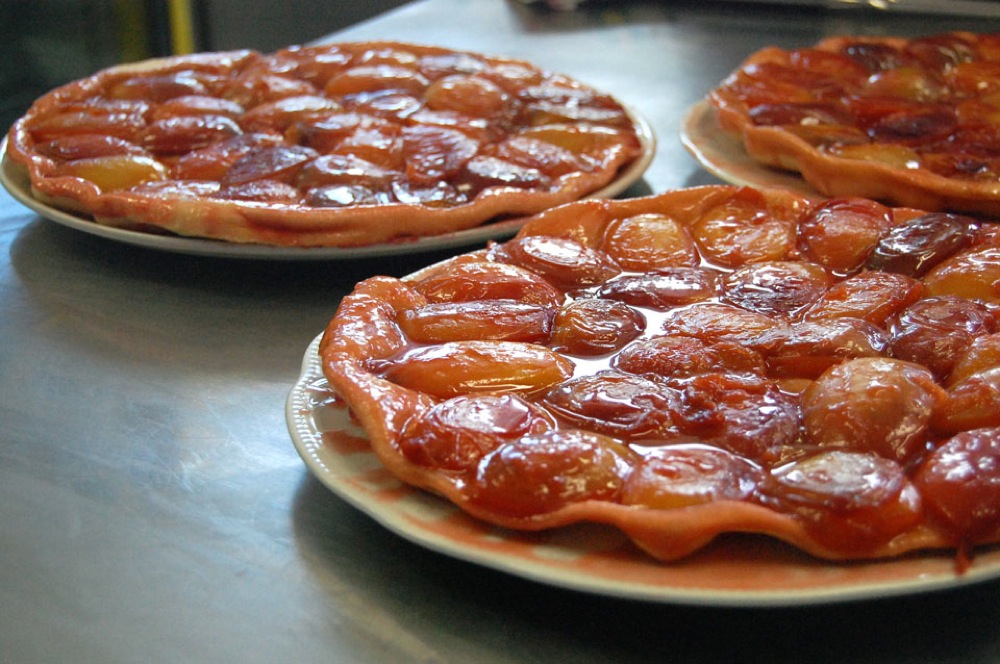 The finished products resembled Renaissance cooking, but in a modern style. All of the flavors are still present, the looks and techniques; however, are not the same.
The finished products resembled Renaissance cooking, but in a modern style. All of the flavors are still present, the looks and techniques; however, are not the same. Before prepping for service, Chef Costantini mentally prepares for the night ahead.
Before prepping for service, Chef Costantini mentally prepares for the night ahead.